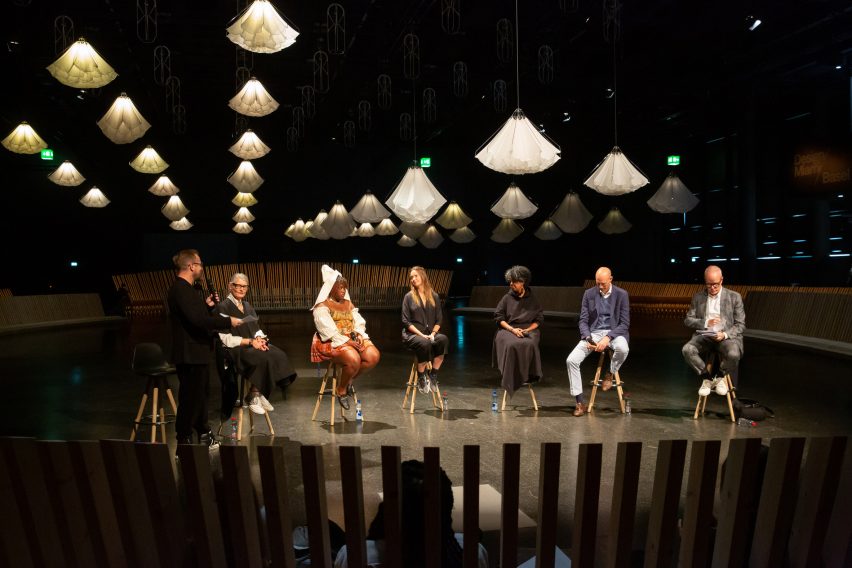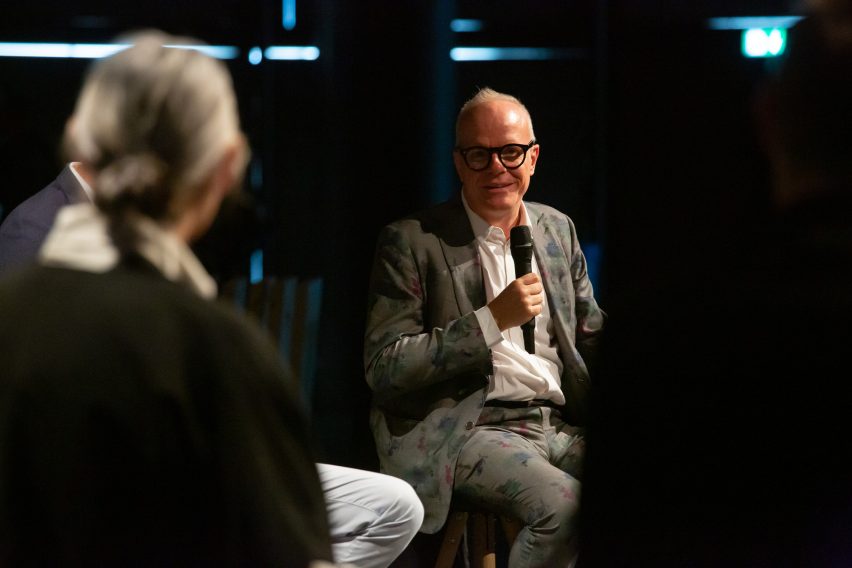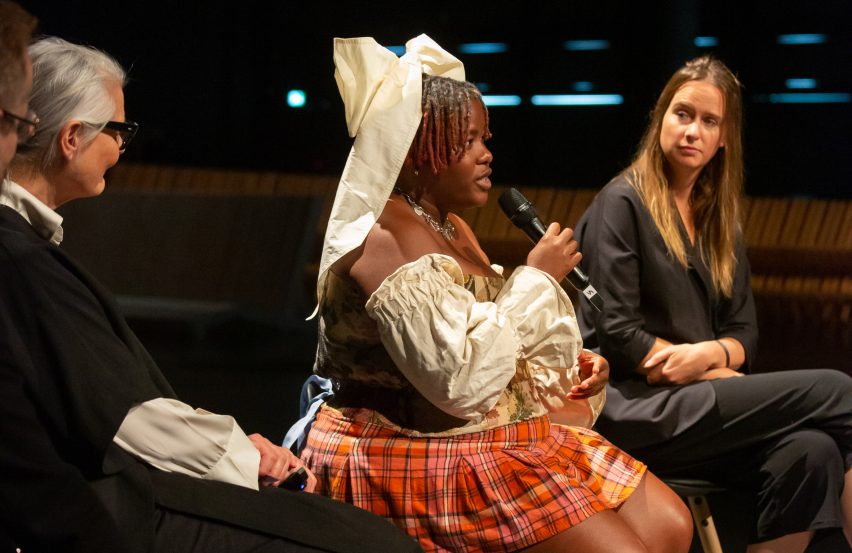Therme Art's Basel talk examines architecture's potential to improve mental health
Dezeen promotion: curator Hans Ulrich Obrist and other industry experts came together to discuss the ways in which architecture and design can be utilised to create restorative spaces that improve mental wellbeing.
The talk, hosted by Therme Art, was titled Art and Architecture as Healing: Shaping a Mental Health Economy and took place during this year's Design Miami/Basel.
It comes as part of Therme Art's Wellbeing Culture Forum, a series of online and offline events examining how urban environments can be more connected with nature and, in turn, improve our health.
Therme Art's CEO, Mikolaj Sekutowicz, paired up with Obrist, who is artistic director of London's Serpentine Galleries, to moderate the panel.
They presided over five other speakers, including designer and meditation professional Franziska Kessler, artist Precious Okoyomon, neuroscientist Olaf Blanke, artist Torkwase Dyson, Lonneke Gordijn, who is co-founder of Studio Drift.

Gordijn suggested that indoor spaces can become more nurturing by making use of technology that is able to simulate the rhythms of the outdoors.
Studio Drift's recent Shy Synchrony installation, which served as the backdrop to this Therme Art talk, explores similar ideas – it is made up of several textile "shylights" programmed to hypnotically rise and fall in a motion that's reminiscent of blossoming flowers.
The work invited visitors of the Design Miami/Basel to become active participants of their built environment by observing the soothing effect of the artwork on their body signals, using Therme Mind's new MYND technology.
The technology is a collaborative project with digital neurotherapeutics platform MindMaze, and creates digital solutions, which interact with users' mind-body functions to promote mental and physical wellbeing.
"Technology can make something that comes close to feeling natural," said Gordijn. "Maybe that sounds weird because you could just take a walk in a forest – but not everyone can do that."
"Our studio uses technology as a learning tool; we try to figure out at what point you can respond to technology in an emotional way, in a way that brings you to a feeling or emotion that you're looking for because you're not getting it from the current environment," she continued.

Kessler went on to propose that busy, high-pressure spaces like offices should include rooms where staff can regularly come together to practice mindfulness or do calming breathing exercises.
"When we have meetings in hostile environments, the energy in the room tends to exhaust itself," Kessler said. "We often forget the fact that we all came together to create something in the first place."
Okoyomon, meanwhile, spoke on the mentally restorative effect of green spaces and how this has come to influence her own artwork. Earlier this year she created a luscious, foliage-filled garden installation for the rooftop of the Aspen Art Museum.
"There are so few spaces where you're allowed to grant yourself a moment of rest and peace because of the constant ferocity of the world and the way it moves," Okoyomon said. "I'm always trying to think of portal spaces where you can find yourself in the world, but also out of time – for me, a garden is one of those."

Therme Art is the cultural incubator of Therme Group. It works to help creatives across the globe realise their large-scale and long-term art projects.
Another one of the organisation's Art's Wellbeing Culture Forum talks took place last month at the Venice Biennale. It saw Stefano Beori, Joseph Grima and other experts from the architecture and design industry explore how we can reimagine our cities while simultaneously replenishing the natural world.
Partnership content
This article was written by Dezeen for Therme Art as part of a partnership. Find out more about Dezeen partnership content here.